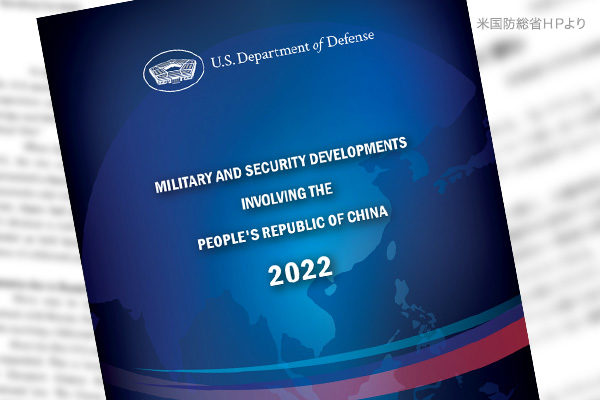On November 29, the U.S. Department of Defense published its annual report on China’s military power. In consideration of debate on defense in Japan, I would like to take up two points in the report: China’s nuclear force buildup and the integration of the People’s Liberation Army (PLA) Navy and the China Coast Guard (CCG).
Nuclear force buildup
As reported by news media, the Pentagon report predicts that the number of nuclear warheads fielded in China will increase from more than 400 at present to 1,500 by 2035.It provides the reasons for predicting the rapid nuclear force buildup for the first time, explaining that China needs strategically to deter an enemy’s first strike and counterstrike if deterrence fails, and that China is prepared to increase the production of nuclear warhead materials such as plutonium, enriched uranium and tritium.
Regarding maritime nuclear force, the report indicates that new JL-3 SLBMs (Submarine-Launched Ballistic Missiles) may be mounted on JIN class SSBNs (Ballistic Missile Submarines Nuclear-powered). The JL-3 features a range of about 12,000 kilometers, comparing to about 8,000 kilometers for the existing JL-2. If JL-3 SLBMs are mounted on a SSBN, the submarine can be deployed in the Bohai Gulf or the South China Sea, rather than in the central Pacific Ocean, to strike the U.S. mainland. This will be highly advantageous for noisy Chinese SSBNs, while being troubling for the West.
Those who feel complacent that Chinese nuclear weapons are not aimed at non-nuclear countries such as Japan under the policy of no first use of nuclear weapons should revamp their thinking. On June 28, Liujun Taolue, a Chinese website run by retired military personnel of the PLA, aired a video threatening to except Japan from the policy of nuclear no first use and launch nuclear attacks on Japan if Japan impedes China’s reunification with Taiwan. The Chinese government has refrained from deleting the video, indicating its tacit acceptance of the video. This fact should be known to those who remain self-complacent.
In addition to China, Japan is surrounded by North Korea continuing tactical nuclear force drills and Russia threatening to launch nuclear attacks on Ukraine. Should Japan stick to its three non-nuclear principles of not possessing, not producing and not permitting the introduction of nuclear weapons?
Integration of the PLA Navy and CCG
The Pentagon report also notes that 22 JIANGDAO class corvettes have been transferred to the CCG. Last month, a CCG ship armed with 76 mm guns reportedly entered Japan’s territorial waters around the Senkaku Islands for the first time. This was a JIANGDAO class corvette. The CCG has been put under PLA control under a 2018 legal amendment.
In Japan, the Ministry of Defense offered to provide the Japan Coast Guard (JCG) with retired destroyers in 2013. But the JCG turned down the offer for the reason that it would be costly to maintain destroyers for which engines, weapons and Command, Control and Communication systems differ completely from those for JCG ships. But a real reason may have been that Article 25 of the JCG Act provides the JCG has no military functions.
Defense spending of the North Atlantic Treaty Organization (NATO) includes coast guard spending on condition that coast guards have military functions. In Japan, however, the Ministry of Finance is trying to include JCG spending into defense spending despite the fact that the JCG has no military functions.
Is it right for Japan to use JCG spending just for padding defense spending without debating legalizing the JCG’s possession of military functions at a time when China is integrating its Navy and CCG?
Fumio Ota is a councilor and a Planning Committee member at the Japan Institute for National Fundamentals. He is a retired Vice Admiral of Japan Maritime Self-Defense Force.


